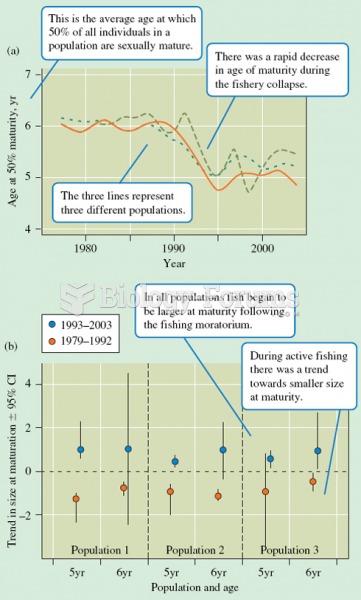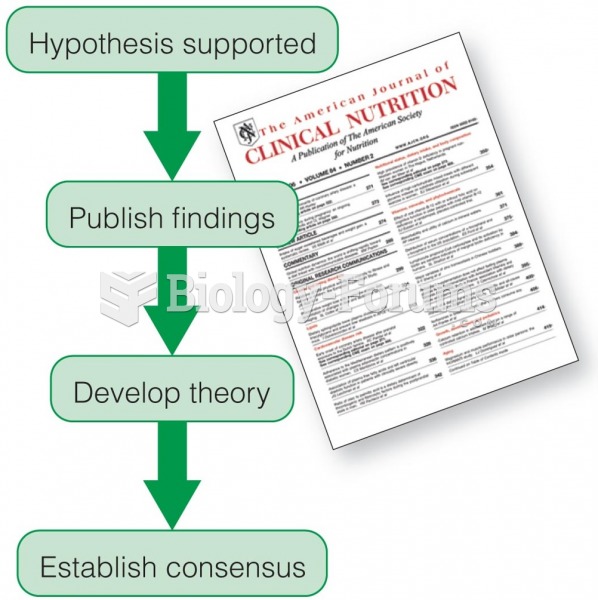|
|
|
Multiple experimental evidences have confirmed that at the molecular level, cancer is caused by lesions in cellular DNA.
Most women experience menopause in their 50s. However, in 1994, an Italian woman gave birth to a baby boy when she was 61 years old.
Though methadone is often used to treat dependency on other opioids, the drug itself can be abused. Crushing or snorting methadone can achieve the opiate "rush" desired by addicts. Improper use such as these can lead to a dangerous dependency on methadone. This drug now accounts for nearly one-third of opioid-related deaths.
If you could remove all of your skin, it would weigh up to 5 pounds.
Bisphosphonates were first developed in the nineteenth century. They were first investigated for use in disorders of bone metabolism in the 1960s. They are now used clinically for the treatment of osteoporosis, Paget's disease, bone metastasis, multiple myeloma, and other conditions that feature bone fragility.
 (a) Age of maturity of Atlantic cod decreased during the fishery collapse. (b) Evidence of maturatio
(a) Age of maturity of Atlantic cod decreased during the fishery collapse. (b) Evidence of maturatio
 In 2010 protesters in Washington, D.C., demanded that the Obama administration support liberalized i
In 2010 protesters in Washington, D.C., demanded that the Obama administration support liberalized i





